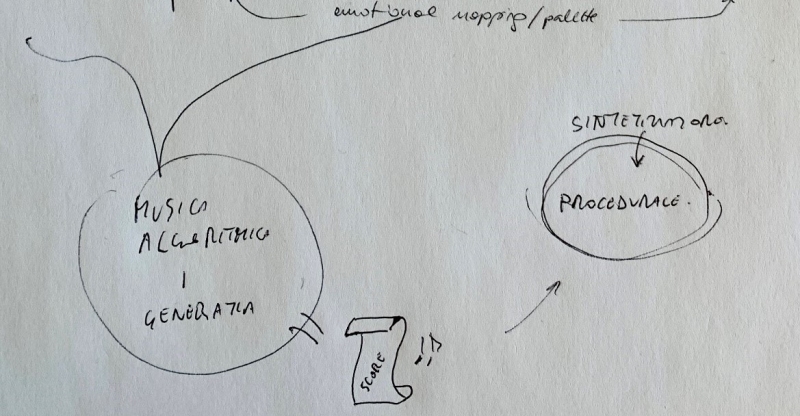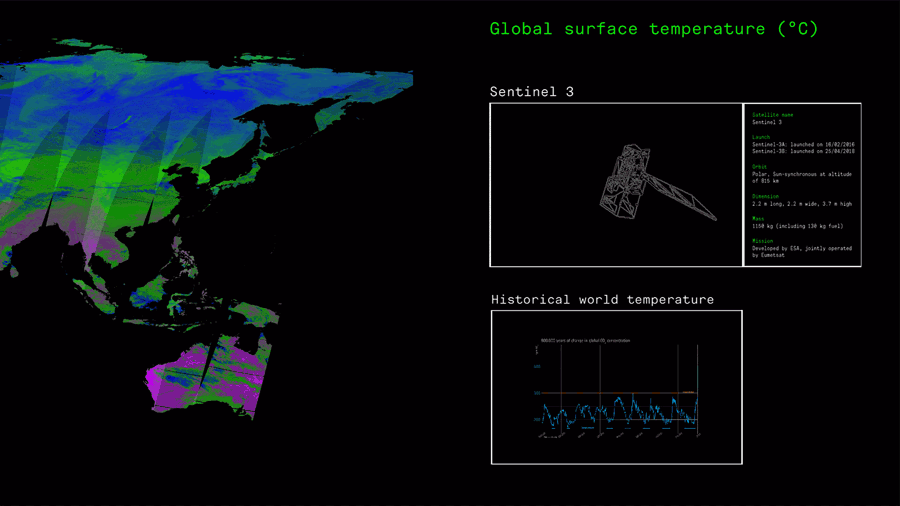The Earth Bits Data Sonification
The console that Dotdotdot created and developed for “The CO2 Mixer – Identifying Human Impact”, one of the four sections of the installation Earth Bits – Sensing the Planetary, features an immersive sound experience designed with SuperCollider, a software for real-time audio synthesis and algorithmic composition that maps the parameters which are inputted through the controllers and transforms them into procedural sounds.
The calculation of individual environmental impact is thus translated into an audio mix within a spectrum of musical scales that range from “good” to “bad” managed by the seriousness controller, which has been developed to build an infinite emotional sound palette. The procedural sound changes as the polyhedric sound dimension parameters change, by modifying the BPM (beats per minute), the time envelope, the timbre, the harmony and the intonation.
The musical spectrum encompasses negative and positive connotations that mirror the impact level of individual inputs – accelerating the rhythmical accents, emphasising the frenzy and sharpening the timbre as the carbon footprint increases. Since data sonification is a real-time synthesis, the score is not written a priori; rather it is a system designed so that the sounds and the compositions will constantly vary, providing an ever-changing experience.
THE DATA SONIFICATION PROJECT
Dotdotdot’s reference list
The Sonification Handbook
Thomas Hermann, Andy Hunt and John G. Neuhoff (eds.), VV.AA., Logos Publishing House, Berlin, 2011.
 |
This is one of the most comprehensive collections of essays on the intersection between auditory display and data sonification. Data sonification is a way to convey information using non-speech sounds by means of compressing long datasets over time. The human ear is much faster at understanding details than the eye, allowing the brain to recognise pattern variation quickly. These essays explain the role of the sound component in conveying information and include a reflection on the taxonomy of sound. They also discuss the importance of this topic as a means to share information emotionally with visually impaired people.
-
More about this book here.
Designing Sound
Andy Farnell — The MIT Press, Cambridge, MA, 2010.
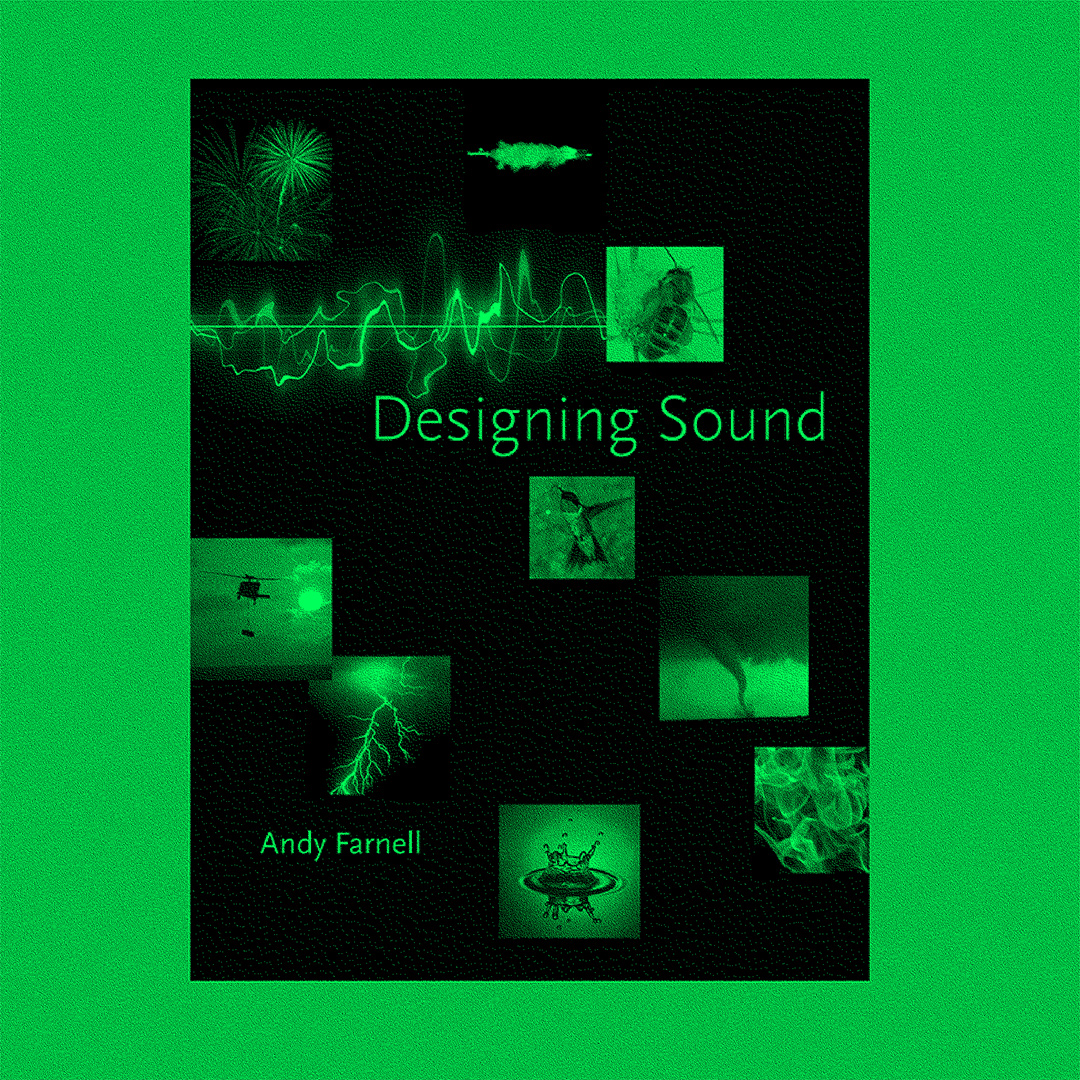 |
This essay discusses how to generate procedural sound from a practitioner’s perspective. It provides a theoretical framework and a practical and systematic approach to making everyday sounds, ambient sounds and effects for games, films, animated films and media, as well as explaining different synthesis methods for interactive applications.
-
More information here.
The Soundscape: Our Sonic Environment and the Tuning of the World
R. Murray Schäfer — Destiny Books, New York, 1993 (1977).
 |
The Canadian composer, writer, music educator and environmentalist R. Murray Schäfer popularised the concept of soundscape as “the acoustic environment as perceived by humans, in context”. This book analyses how the ever-present array of noises that make up the sonic environment in which we all live affect our comprehension of modern life.
By answering the question of humankind’s relationship with the sounds of its environment and what happens when those sounds change, the author discovers significant features and individuality in the soundscape by categorising keynote sounds, signals and sound marks, as well as archetypal sounds, in order to “seek the sound we want to preserve, encourage and multiply”.
-
More about this book here.
Music MouseLaurie Spiegel, 1986.
|
Music Mouse EmulationTero Parviainen, 2017.
|
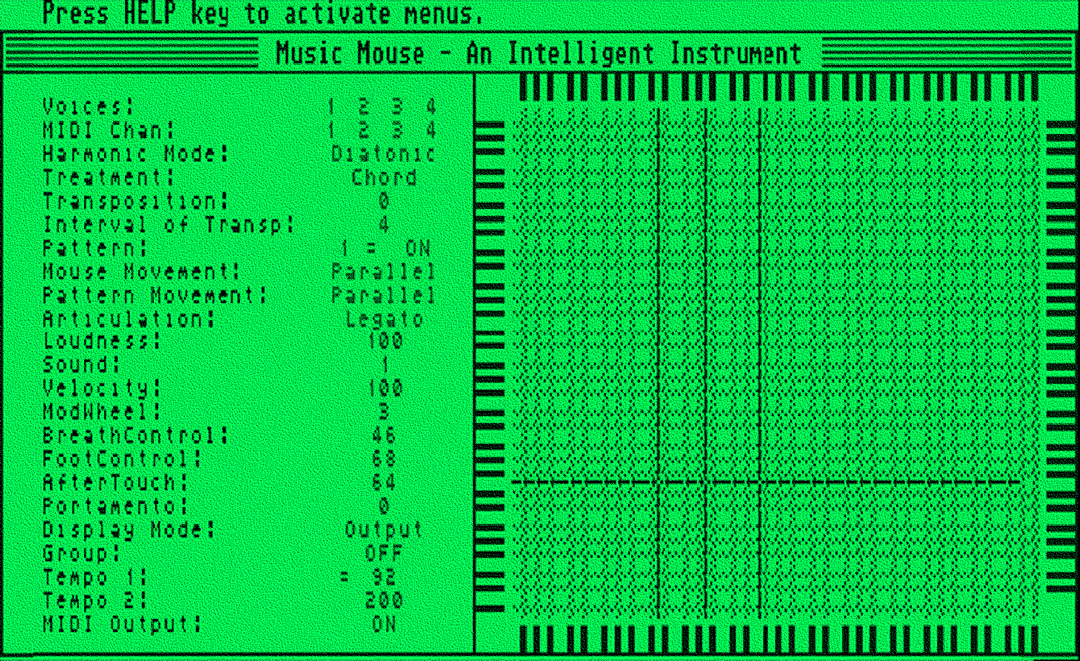 |
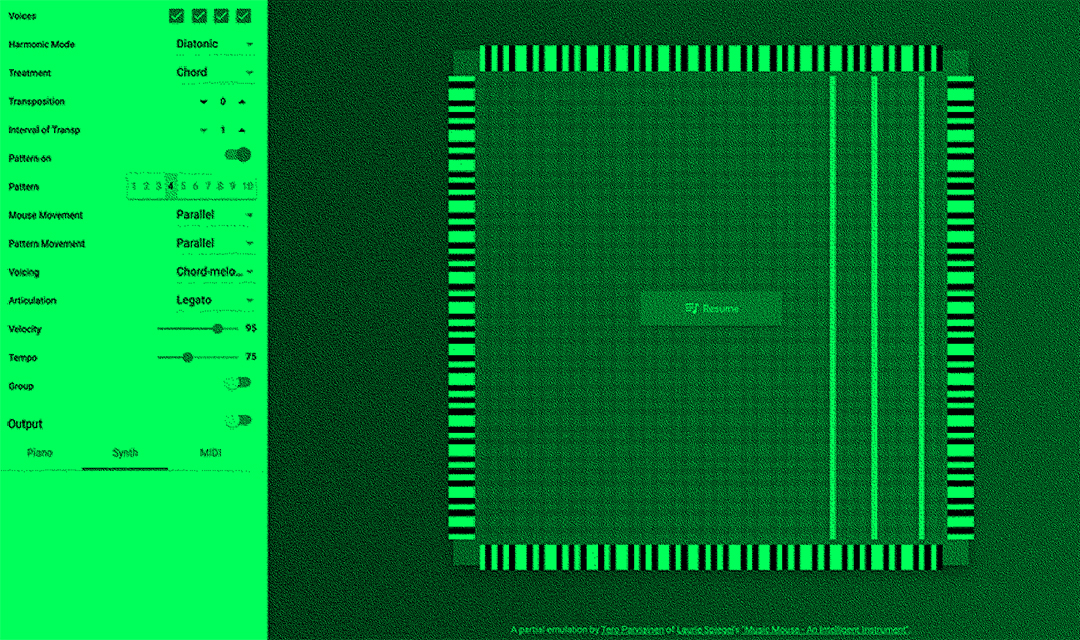 |
Music Mouse is an algorithmic music composition programme widely used on Macintosh, Amiga and Atari computers developed by Laurie Spiegel. The project developed by Tero Parviainen is an online emulation of the same principles, inspiring the coding on SuperCollider of the harmonic sections of the procedural sound for the data sonification in The CO2 Mixer.
How Generative Music Works
Tero Parviainen, 2017.
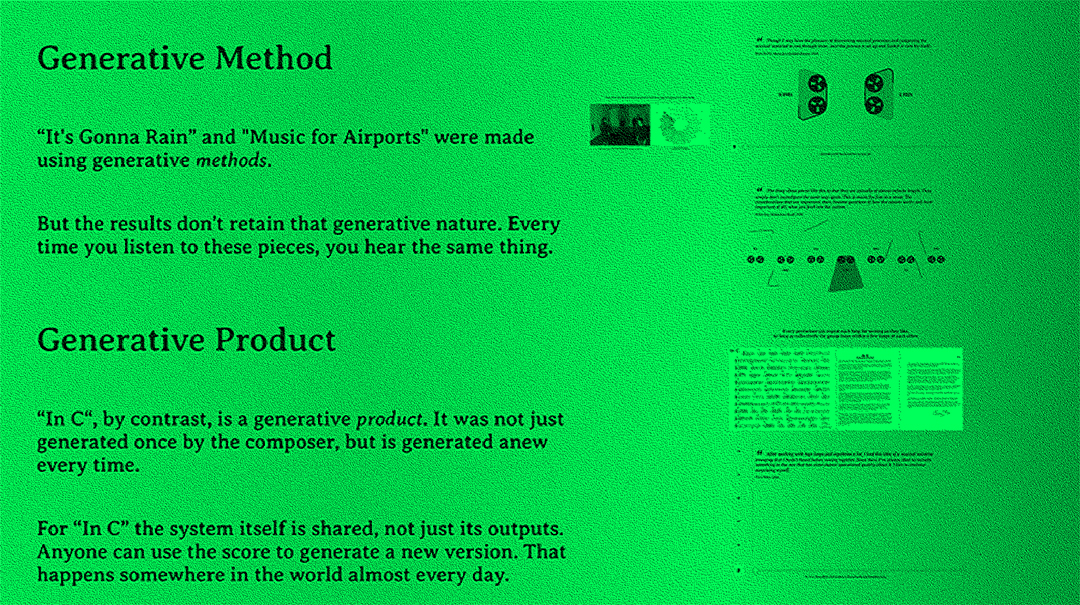 |
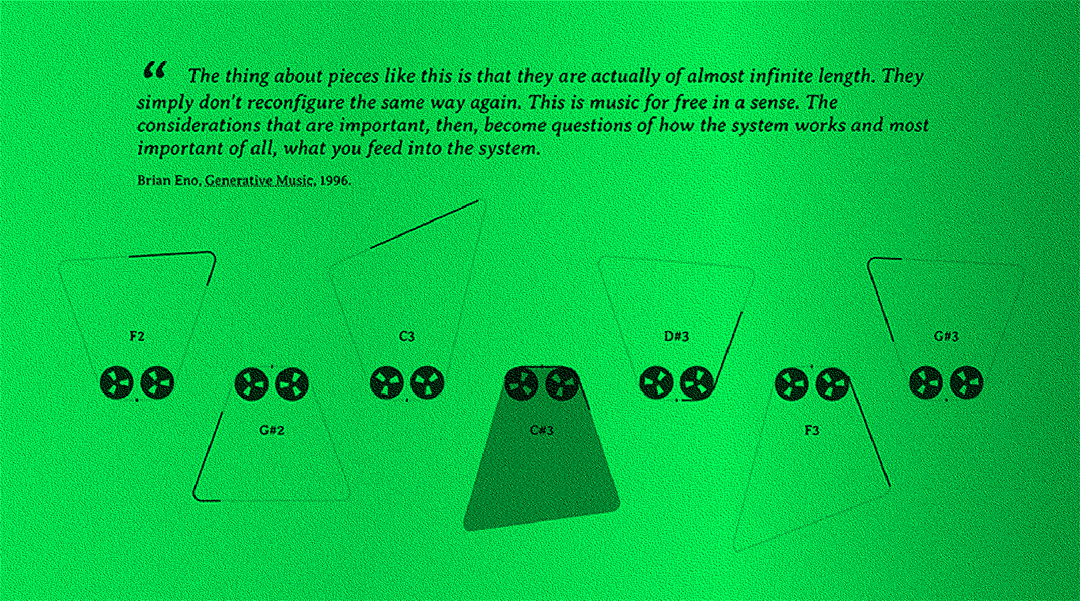 |
The website developed by sound designer Tero Parviainen contains a series of interactive slides for an experimental introduction to the concept of generative music. It is both a repository of references, ranging from Steve Reich to Brian Eno, and of theoretical information about sound that is both educational and historical.
-
Access the website here.
|
Earth Bits – Sensing the Planetary is a data-driven installation developed by the research and interaction design studio Dotdotdot that unpacks the complexities of the climate science measuring humankind’s carbon footprint through graphic and digital content, animated videos and an interactive station.
|
“maat Explorations” is an ongoing programme that delves into the socio-cultural and environmental transformations stemming from the current bio crisis and ecological destruction. It provides an insight into the hard science of climate intervention and the creative speculations behind innovation-led research to safeguard our planetary co-existence.
|
|
Video of SuperCollider software interface while coding data and transforming the physical input of "The CO2 Mixer" console into a generative sound. Courtesy of Dotdotdot.
|
|
|
Dotdotdot is a multidisciplinary design studio founded in Milan in 2004 with a heterogeneous team of over 20 people including architects, designers, developers, engineers, sound designers and storytellers.
|


